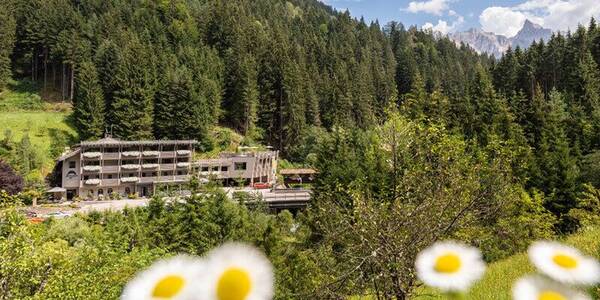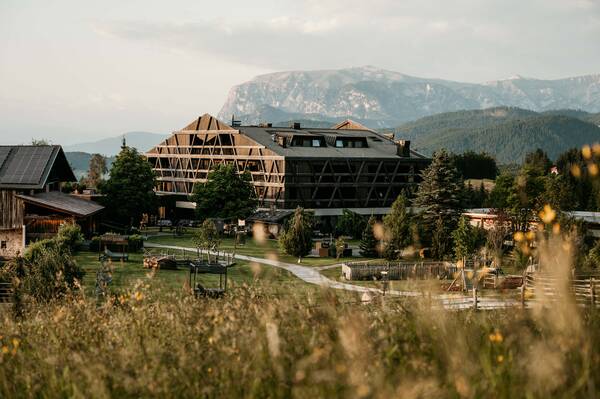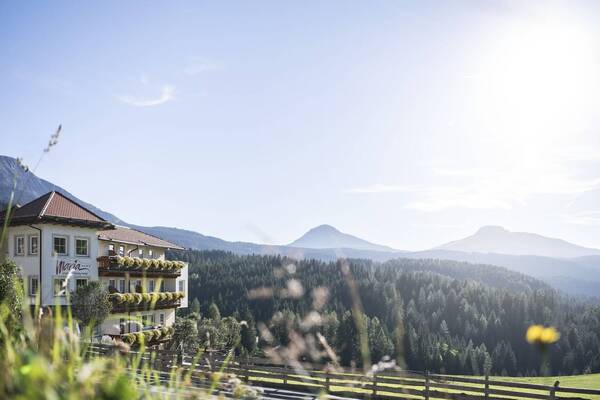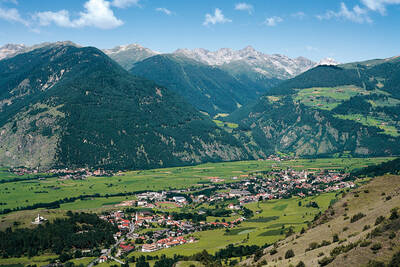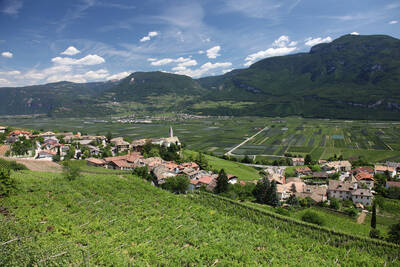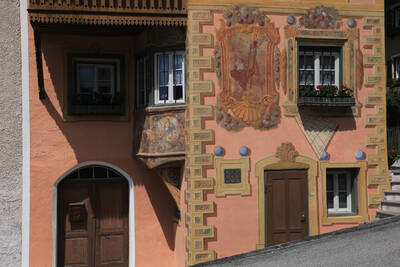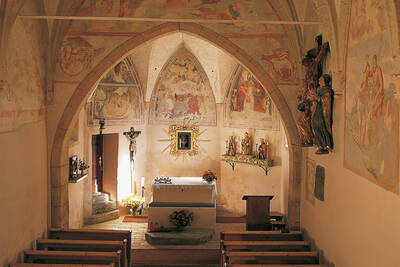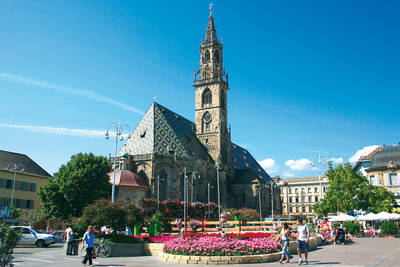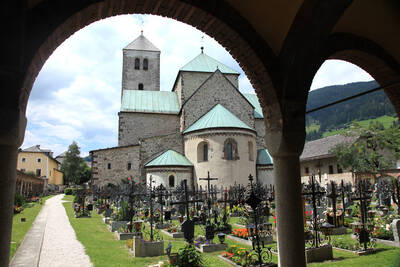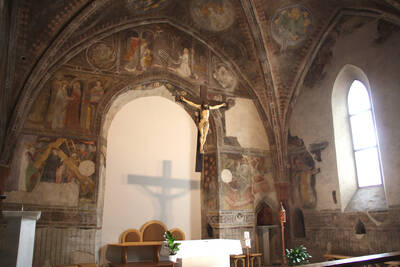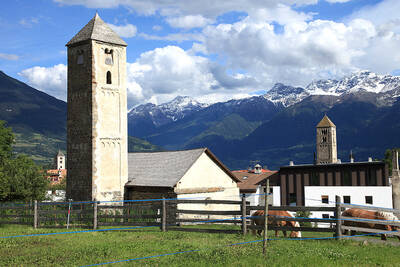It is no longer possible to diagnose exactly what disease it was, epilepsy or fits of madness are suspected due to the sparse reports. In any case, the small original chapel quickly became the destination of numerous pilgrims who prayed to the Virgin Mary for help. After thorough investigations, the responsible Prince-Bishop of Trent, Karl Madruzzo, recognized the place of grace, which further increased the influx of pilgrims. Soon a larger church was needed to accommodate the influx of believers.
Maria Weißenstein
In 1673, a first baroque pilgrimage church was finally consecrated, designed by architect Giovanni Battista Delai. The Delais came from Lombardy and formed a whole dynasty of architects who, in the 17th and 18th centuries, were involved in a number of buildings in South Tyrol as public city planners of Bolzano, such as the church of Saben, the Calvary church in Bolzano, the Palais Mamming in Merano, or the Bolzano Mercantile Magistrate.
From 1719 to 1722, the pilgrimage church was renovated by the Innsbruck architects Johann Martin Gump and Agostino Maria Abfalter. The last scion of the Delai family, Giuseppe Delai, was finally responsible for another renovation in 1753, in which the baroque style of the church was emphasized and the church was enlarged. In addition, a monastery building was built around the church. The ceiling frescoes in the church are by Joseph Adam Mölckh, who adorned numerous sacred buildings with paintings in the southern German and Austrian regions, including the parish churches of Schlanders and Hall in Tyrol, or the Cistercian abbey of Rein. The frescoes in the side chapels were only created in 1884 and were executed by the Tyrolean painter Alfons Silber.
The most important place of pilgrimage in South Tyrol
Under Emperor Joseph II, the pilgrimage suffered a severe setback: the monastery was dissolved in 1787, all the inventory was auctioned off, and the three towers were demolished. The buildings were used for agriculture, and it was not until 1836 that the Tyrolean Servites were able to repurchase Maria Weißenstein and rebuild the monastery.
Since then, Maria Weißenstein has again become the most important place of pilgrimage in South Tyrol. Located in the southeast of Bolzano on the 1,520 m high Reggelberg, it is still the destination of numerous pilgrims, but also of people simply interested in art and cultural history. Two roads - one from the Eggental via Deutschnofen, the other from the Etschtal via Aldein - lead up to the place of pilgrimage, from which you have a magnificent view of the Weißhorn and the Dolomites from the Rosengarten to the Schlern.
Maria Weißenstein - or Italian Pietralba - can be visited throughout the year. The church is open daily from 7:30 a.m. to 7:00 p.m. without interruption.
 How do you like the content of this page?
How do you like the content of this page?
Please give us your feedback!
Recommended accommodations
Month
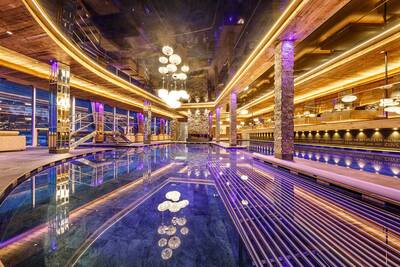
Vacation Offers
tips







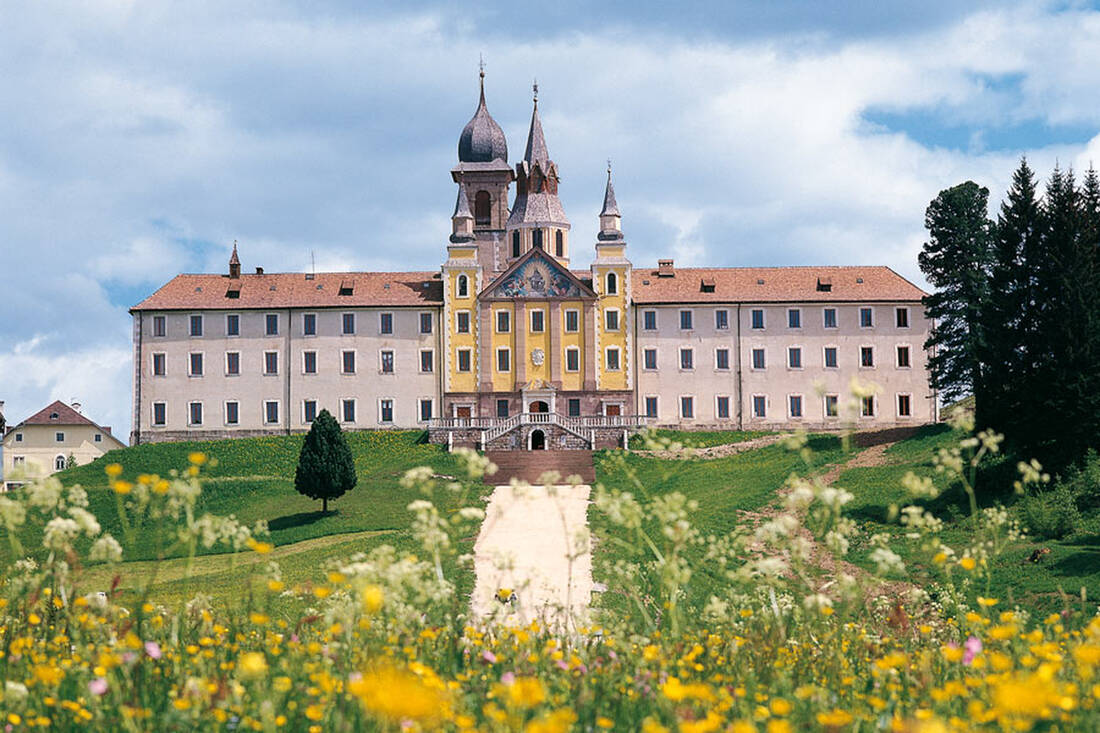
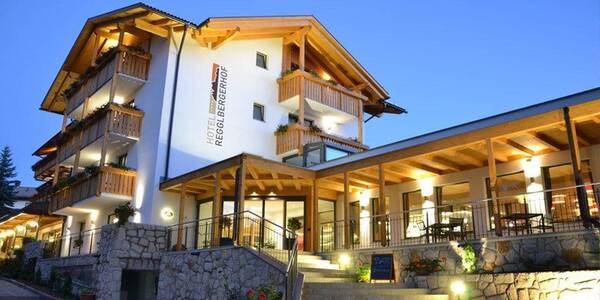





 notice
notice